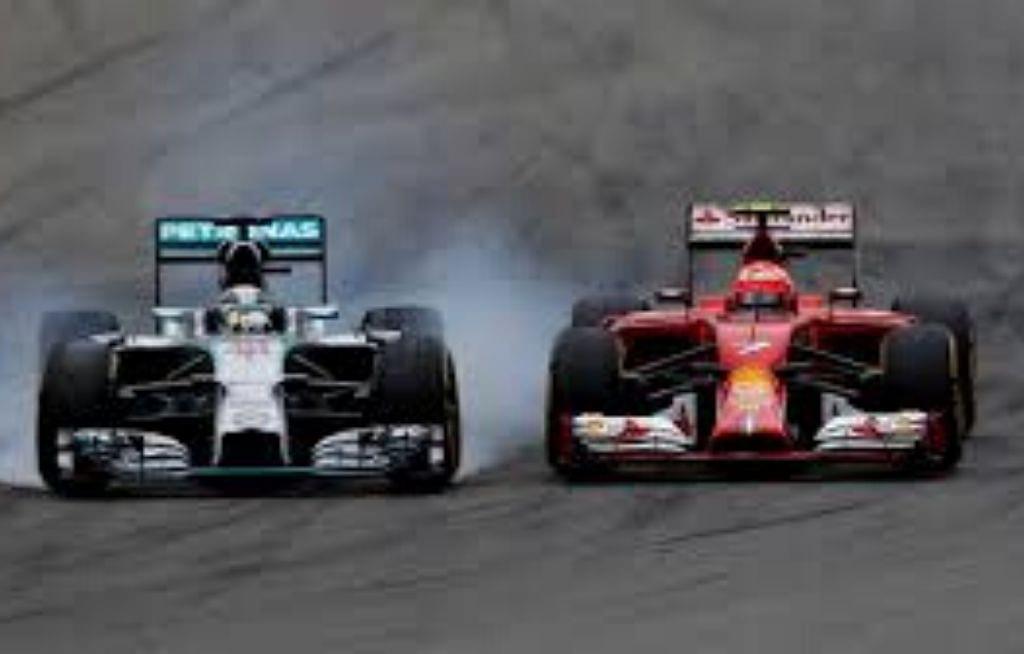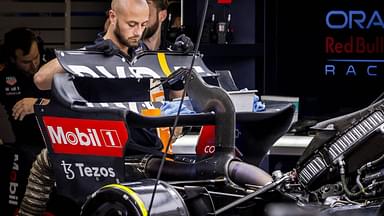The drag Reductions System (DRS) in F1 is one of the most crucial technologies. It indeed enhances the quality and intensity of races with the potential to increase overtakes.
The system was introduced in 2011 in which sections of the track, usually the pit straight and one other area at least, are designated to using the DRS – where overtakes become more likely.
If a driver is within a second of the car ahead while passing the ‘detection’ point, they can use DRS once in the ‘activation’ zone. Thus, the equipment becomes an attractive tool for the driver vying to climb in the order during the race.
Check out the DRS on @GeorgeRussell63‘s 2022 car! 🤯#F1 pic.twitter.com/dH9DxQybKc
— Formula 1 (@F1) February 25, 2022
How does DRS F1 work?
Once DRS is activated, a section of a car’s rear wing creates an opening that allows air to rush through. Hence, reducing the aerodynamic drag of a car (resistance against the air). The function boosts the car and gives a considerable pace advantage against the car being chased.
It is claimed that once DRS is activated, a car receives an added speed of up to 10mph, helping to nudge ahead. The innovation is implemented in Formula 1 to increase overtaking and intends to make the racing spectacle further exciting.
The DRS has been a boon to the sport’s owners, as the constant overtaking has only been a pleasurable delight for the viewers. With 12 successful years in F1, this technology is in F1 to stay for the foreseeable future.
Also read: Toto Wolff Slams the Drive to Survive Season 5 for Pretending to Be a Documentary
Has overtaking increased because of DRS?
Initially, when DRS was introduced, overtaking incidents shot up dramatically. However, those numbers crashed in 2017 when new regulations meant cars were wider and quicker in straight lines, making passing much more difficult.
But once the teams got used to that regulation, the overtaking once again became seamless for drivers. With the help of DRS, the number of overtakes every year is only growing astronomically.
To put it in perspective, Formula 1 saw 599 recorded overtakes. Only a year later, the number of recorded overtakes jumped to 785. A colossal rise of 186 overtakes with only one added race is significant. Hence, it proves that DRS makes it easier for drivers to climb.
P20 👉👉👉 P5@LewisHamilton put on an overtaking show on Saturday!#BrazilGP 🇧🇷 #F1Sprint pic.twitter.com/erH6WjvMIi
— Formula 1 (@F1) November 13, 2021
Also read: McLaren F1 Team: How McLaren managed a podium finish at Austrian GP despite financial crunch
Why can’t drivers use DRS everywhere and every time?
DRS is an effective tool even to extend the fully optimized speed of the F1 cars. But they can’t be used everywhere and every time. An F1 track is full of corners, and using them on even the slightest, forgetting about the sharpest and hairpins of turns, wouldn’t benefit, as the cars slow down, and even if used, drivers can lose control of the car, and things could even get fatal.
Therefore, there are only a few DRS zones on an F1 track. Most of the time, it’s only two. Recently there have been tracks that even have got three zones. So, such areas are helpful for teams trying to build up and get the best possible position in the race. Several teams strategize over these sections if they have a better straight-line speed.
Interestingly, in 2022, F1 introduced a fourth DRS zone for Albert Park, Australia. However, after drivers complained about safety, it was scrapped by the officials. However, in the new update by the FIA, the fourth DRS zone at Albert Park will be reactivated.
However, a team can’t use DRS throughout the race. The teams are prohibited from applying it during the first two laps of the race or the rolling restart or grid restart. Moreover, the race director can also DRS zones if they find track conditions unsafe.







